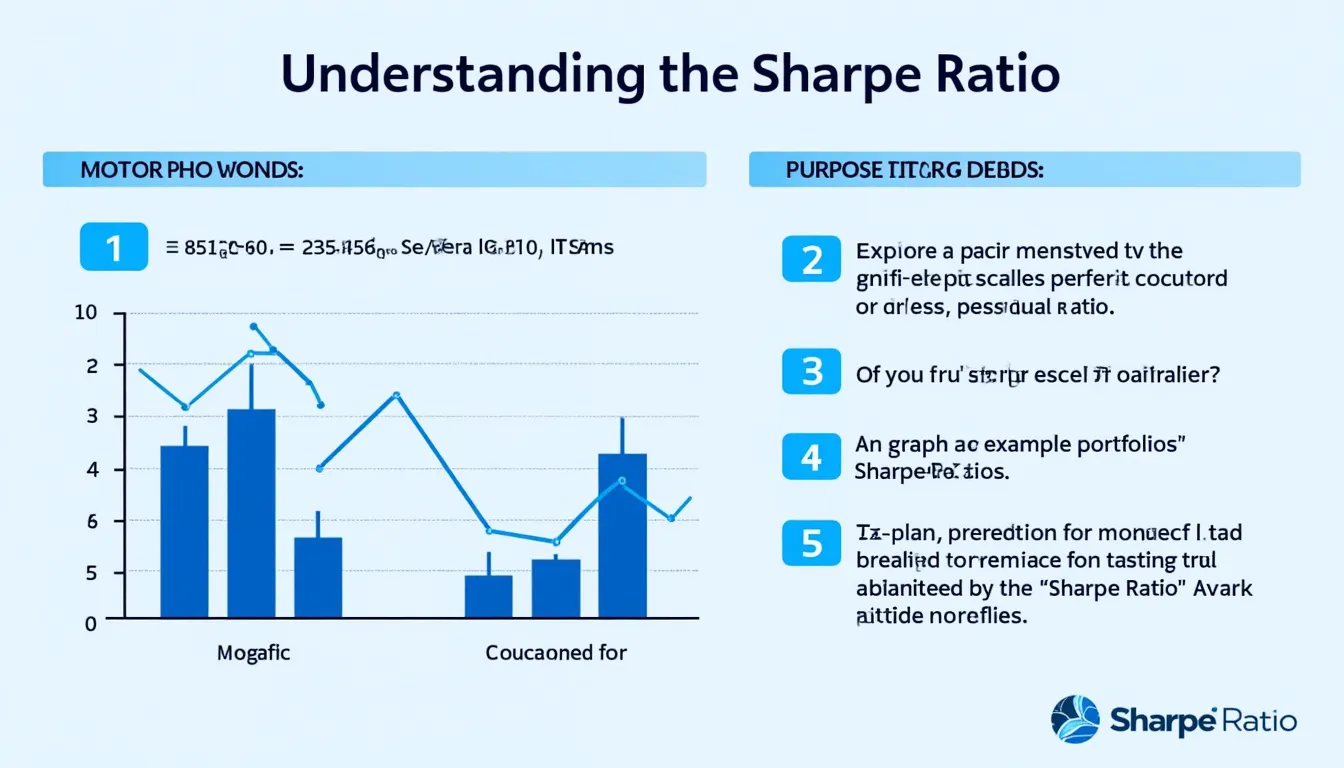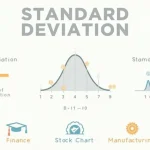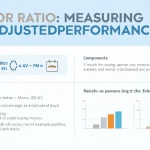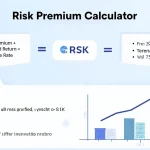Sharpe Ratio Calculator
Is this tool helpful?
How to use the tool
Follow these four steps to judge your portfolio’s risk-adjusted return.
- 1 — Enter Portfolio Return (%): e.g., 12.60 or 6.25.
- 2 — Enter Risk-Free Rate (%): e.g., 3.00 or 1.50.
- 3 — Enter Standard Deviation (%): e.g., 8.50 or 4.80.
- 4 — Press “Calculate”. The result box shows your Sharpe Ratio to four decimals.
Formula used
The calculator applies:
$$\text{Sharpe Ratio}= rac{R_p-R_f}{\sigma_p}$$
Where Rp = portfolio return, Rf = risk-free rate, σp = portfolio standard deviation.
Example calculations
- Sample A: 12.60 % return, 3.00 % risk-free, 8.50 % σ ⇒ $$ rac{12.6-3}{8.5}=1.1294$$
- Sample B: 6.25 % return, 1.50 % risk-free, 4.80 % σ ⇒ $$ rac{6.25-1.5}{4.8}=0.9896$$
Quick-Facts
- Sharpe > 1.0 is “acceptable,” > 2.0 “very good” (Bodie et al., 2021).
- S&P 500 annual σ ≈ 15 % (S&P Global Market Data, 2023).
- 10-year U.S. Treasury yield averaged 3.9 % in 2023 (U.S. Treasury, 2024).
- William F. Sharpe introduced the ratio in 1966 (Sharpe, 1966).
- Regulators recommend disclosing risk-adjusted metrics in fund reports (SEC Form N-PORT, 2020).
Sharpe Ratio explained
The ratio converts raw return into “reward per unit of volatility,” letting you compare dissimilar assets on equal footing.
Interpreting results
- 0 – 1: return hardly beats risk-free rate.
- 1 – 2: adequate compensation for risk.
- 2 – 3: strong performance.
- >3: exceptional, but verify data quality.
Limitations
- Assumes normal return distribution (Damodaran, 2012).
- Treats upside and downside volatility equally.
- Can distort results when σ is very low.
FAQ
What does a negative Sharpe Ratio signal?
Your portfolio underperforms the risk-free rate; every extra unit of risk reduces value (Investopedia, 2023).
How often should I recalculate the ratio?
Monthly or whenever portfolio allocation, volatility, or the risk-free rate changes to keep comparisons meaningful (Morningstar Methodology, 2022).
Which risk-free rate should I enter?
Use a Treasury bill with maturity matching your investment horizon—“duration matching avoids mismatched risk premium” (CFA Institute, 2022).
Is the Sharpe Ratio reliable for individual stocks?
For single equities, idiosyncratic risk dominates; complement Sharpe with beta or Sortino Ratio for fuller insight (Hull, 2022).
Why can a high Sharpe still hide tail risk?
The metric overlooks skewness and kurtosis; options strategies may show high Ratios yet carry crash risk (Taleb, 2007).
How does Sharpe compare with the Sortino Ratio?
Sortino penalises only downside volatility, useful when upside swings matter less (Sortino & Price, 1994).
Can leverage inflate my Sharpe Ratio?
Leveraging amplifies both return and σ equally, so the ratio remains unchanged—yet absolute losses grow (Asness, 2019).
What Sharpe Ratio do pension funds target?
Many public pensions aim for ≥ 0.6 over rolling five-year periods to meet actuarial hurdles (NASRA Report, 2023).
Important Disclaimer
The calculations, results, and content provided by our tools are not guaranteed to be accurate, complete, or reliable. Users are responsible for verifying and interpreting the results. Our content and tools may contain errors, biases, or inconsistencies. Do not enter personal data, sensitive information, or personally identifiable information in our web forms or tools. Such data entry violates our terms of service and may result in unauthorized disclosure to third parties. We reserve the right to save inputs and outputs from our tools for the purposes of error debugging, bias identification, and performance improvement. External companies providing AI models used in our tools may also save and process data in accordance with their own policies. By using our tools, you consent to this data collection and processing. We reserve the right to limit the usage of our tools based on current usability factors.







